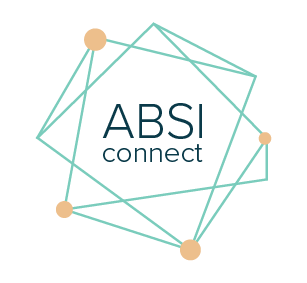This two part blog post was written by Maya Pajevic.
Maya is currently studying Information Design with a double minor in Marketing and Social Innovation at Mount Royal University. She fell in love with the university because of the student-centred approach to education and the social innovation minor, and has recently taken the role of student rep for the social innovation department at the university. If you want to connect with Maya, please shoot her a message on LinkedIn, Twitter or via email at mpaje072@mtroyal.ca.
Part 1 / How Might We?
How Might We’s (HMW), are a common activity used in the design community. They allow standard problem statements to be turned into statements of opportunity to give space to collaborate reimaged services and solutions.
HMW’s are a common tool in the designer’s “toolbox”, but in the world of COVID 19, it might be a lifesaver and a way forward as society works to create a new normal. A better normal perhaps.
A system that can use a creative reframe and can benefit greatly from the power of HMW’s is healthcare, especially long term care facilities (LTC). As Dr. Brian Goldman, an emergency room doctor from Toronto, tweeted
A sad reality, as hospitals (for the most part), knew that there would be an influx of COVID 19 related cases coming through their doors, so they prepared in advance. Bulking up on Personal Protective Equipment (PPE), cancelling or postponing elective treatments and shifting doctor visits to virtual means. However, long term care (LTC) facilities were less fortunate. Despite pleas from those working the frontline that LTC is a COVID hotspot, there was little action, until news outlets, such as the CBC, CTV started broadcasting the devastating news related to these facilities. At this point, roughly 80% of COVID related deaths are attributed to LTC facilities including seniors homes (Harris, 2020).
As a country, Canada is beginning to see the curve flattening, thanks to our collective vigilant and willpower. But, simultaneously, COVID has fundamentally brought cracks to the systems we value most to the surface. Systems that have previously used band aid solutions rather than investing the time and energy to create permanent solutions. This is where HMW’s can generate discussion and action into solving deep rooted problems at their core. Including:
HMW ensure that long term care facilities are supported the way acute facilities are?
HMW provide quality care through virtual means without losing the provider patient relationship?
These are all questions that will soon face society, and there is a better way to tackle these problems head-on. A new normal can be a better normal!
So the next time you’re in a sparring match with a problem - reframe the dilemma into a HMW statement and see what different approaches emerge to tackle the issues.
A fencing match between two athletes
Part 2 / Opportunity’s Knocking: Let Us Create Better System
On March 11, the World Health Organization (WHO) declared COVID 19 a global pandemic, and with it came the realization that the way we work, play, and function would change forever.
Since then, we’ve seen systems - previously rigid and held by best practices,, pivot and adapt on the fly. In days, university classes were taught online. Federal, provincial and local policies were adopted and implemented in a matter of weeks. Virtual doctor visits became the norm.
But as the second, third and fourth wave of this virus are just around the corner, including the safe integration of non COVID related healthcare services, improved access to mental health services, changing policies that recognizes family members as essential members in the care team, implementing more climate change initiatives, I believe there is room for an even greater degree of innovation. And the need for social innovation practices are required- now more than ever before.
While there are numerous definitions of what social innovation is and isn’t, a common one is by Frances Westley. She defines the practice as:
“A social innovation is any initiative (product, process, program, project, or platform) that challenges and, over time, contributes to changing the defining routines, resource and authority flows or beliefs of the broader social system in which it is introduced.
Successful social innovations have durability, scale and transformative impact. ”
Imagine society utilizing the power and potential of social innovation defined above to make better serving communities. Systems that, instead of receding back in the old ways of working post COVID, use this moment in history to make history. Systems that are adaptive. Systems where people feel energized and empowered to be agents of change on a micro, meso or macro level. Systems that reflect the dreams, desires and demands of all those involved and not just a lucky few. This can be the legacy of what society observed, reflected and acted upon post COVID and social innovation can help get us there. As Nike’s famous tagline suggests, we need to “Just Do It”.
Illustration by Virpi Oinonen @voinonen
References
Harris, K.(2020, May 5). Demands grow for national, universal long-term care in response to pandemic. Politics, CBC. https://www.cbc.ca/news/politics/long-term-care-homes-covid19-1.5556041
ABSI Connect’s blog features examples, learnings, and reflections related to social innovation, human-centred design, and systems change in Alberta. Do you have a story, idea, or insight you’d like to share with the ABSI Connect community? Let us know.




